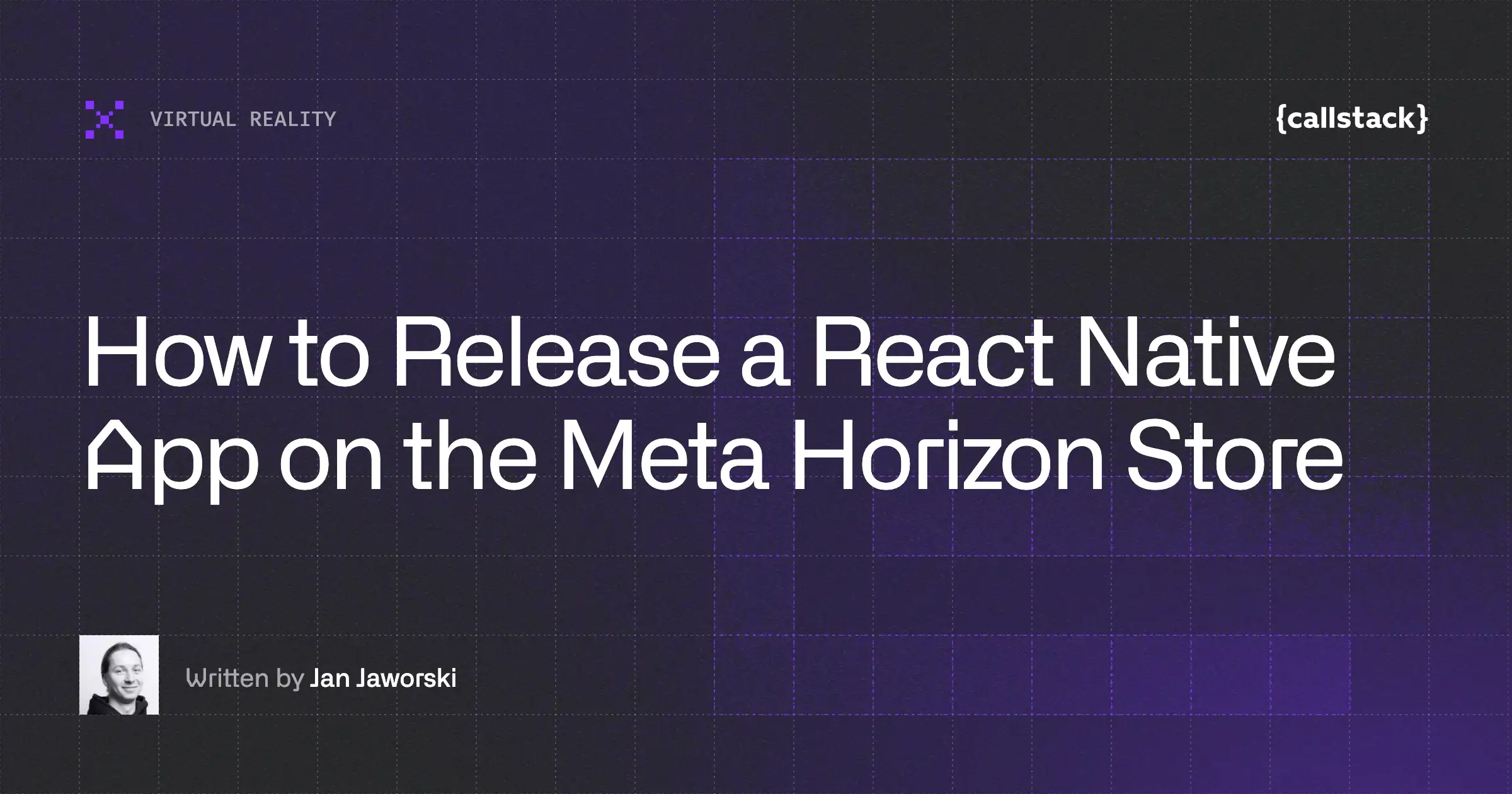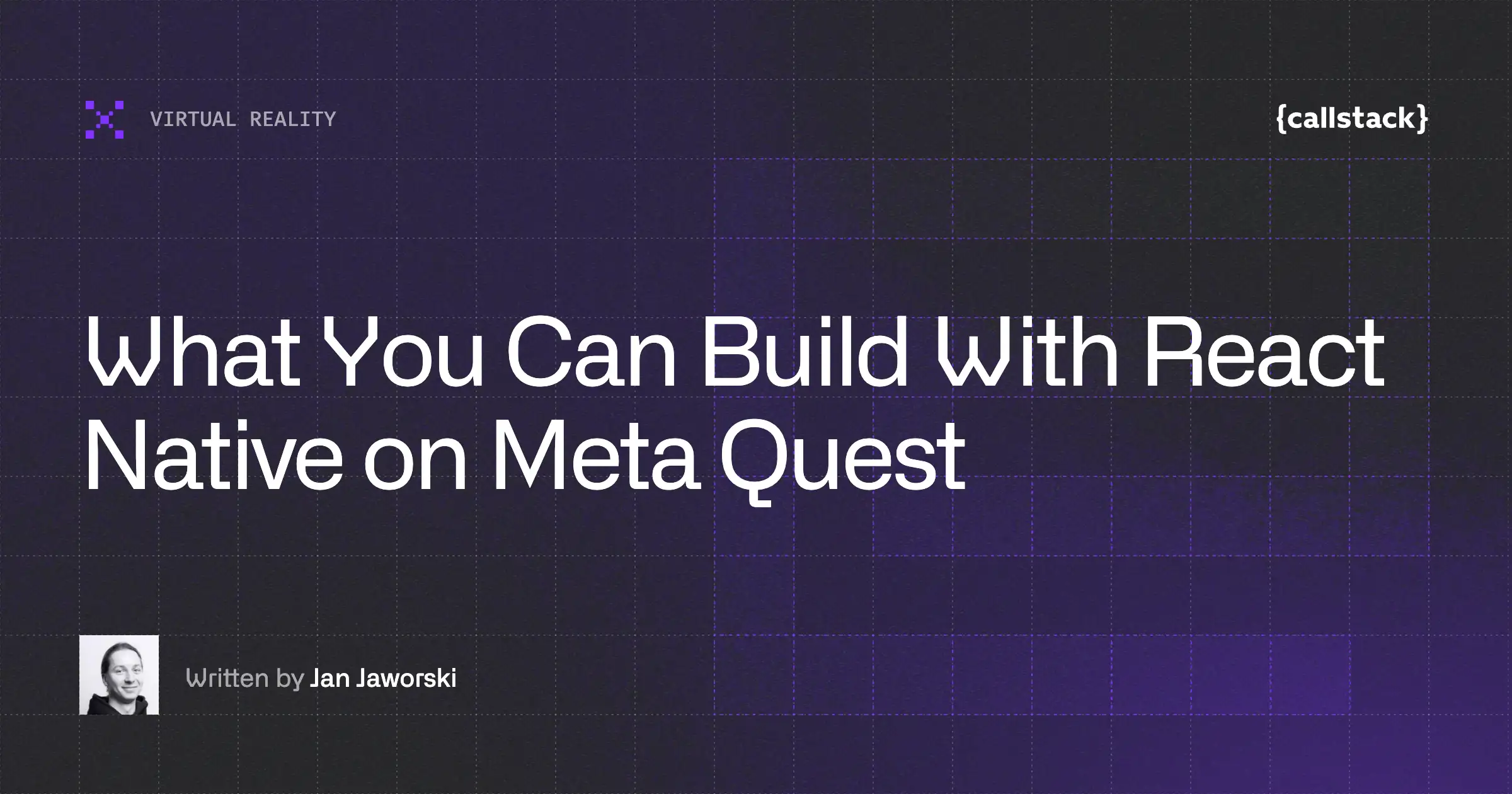For React Native developers, Meta Quest introduces a platform shift that feels both new and familiar. Apps run inside 2D panels placed within a 3D space, powered by HorizonOS built on Android AOSP. That means familiar primitives, tooling, and workflows (Expo Go, Android Studio profiling, and even console logs) work much the same as they do on mobile.
In this episode of React Universe On Air, host Łukasz Chludziński talks with Jan Jaworski (Callstack) and Ram N (Meta) about how React Native became a practical, production‑ready way to build for Meta Quest and how it powers key first‑party Quest experiences such as system surfaces and store interfaces.
Meta Quest as an Android‑based platform
Meta Quest runs on Android AOSP, which means React Native works with minimal friction. Ram explains how the absence of Google Mobile Services affects features like notifications and payments, but notes that Meta provides alternatives that mirror the same functional intent. Because Quest is still an Android device at its core, familiar patterns, like activities, intents, and native modules, behave much as they do on mobile.
2D panels inside 3D environments
Rather than expecting teams to build full VR worlds, Meta designed Quest to support 2D panels rendered within a 3D space. This gives developers the benefits of immersion, such as large surfaces, spatial placement, controller or hand‑based interaction, while still working with React Native views and event systems they already know. Ram shares how many of Meta’s own first‑party system experiences use this model.
Developer workflow and tooling
Jan describes how straightforward the setup is: initialize a project with Expo, run it through Expo Go on the headset, and begin testing. Most common libraries work out of the box, with only Google‑dependent ones requiring alternatives. Profiling and debugging stay familiar as well, thanks to Android Studio tools and Perfetto, which Meta teams use internally for performance work.
Adapting mobile apps for VR
Moving a React Native app into VR does require some design shifts. Jan highlights bigger touch targets, more readable typography, and the freedom to scale panels far beyond mobile dimensions. The team also discusses interactions, which map naturally to existing React Native event systems.
Why this matters for developers
With VR still early and Quest now fully accessible to React Native developers, the episode underscores a rare first‑mover moment. Many mobile apps can be ported quickly, while entirely new categories, like meditation experiences, productivity tools, or lightweight games, become possible with minimal overhead. In short, React Native on Meta Quest is a platform shift, but one grounded in familiar tooling.
Resources
- Łukasz Chludziński on X, LinkedIn, and GitHub
- Jan Jaworski on X, LinkedIn, and Bluesky
- Ram N on web and X
- Callstack’s VR resources
- Meta Horizon Start Developer Competition 2025
Learn more about Virtual Reality
Here's everything we published recently on this topic.
We can help you move
it forward!
At Callstack, we work with companies big and small, pushing React Native everyday.
VR App Development
Build low-latency streaming apps that work across all leading platforms with maximum performance.
React Native Development
Hire expert React Native engineers to build, scale, or improve your app, from day one to production.










